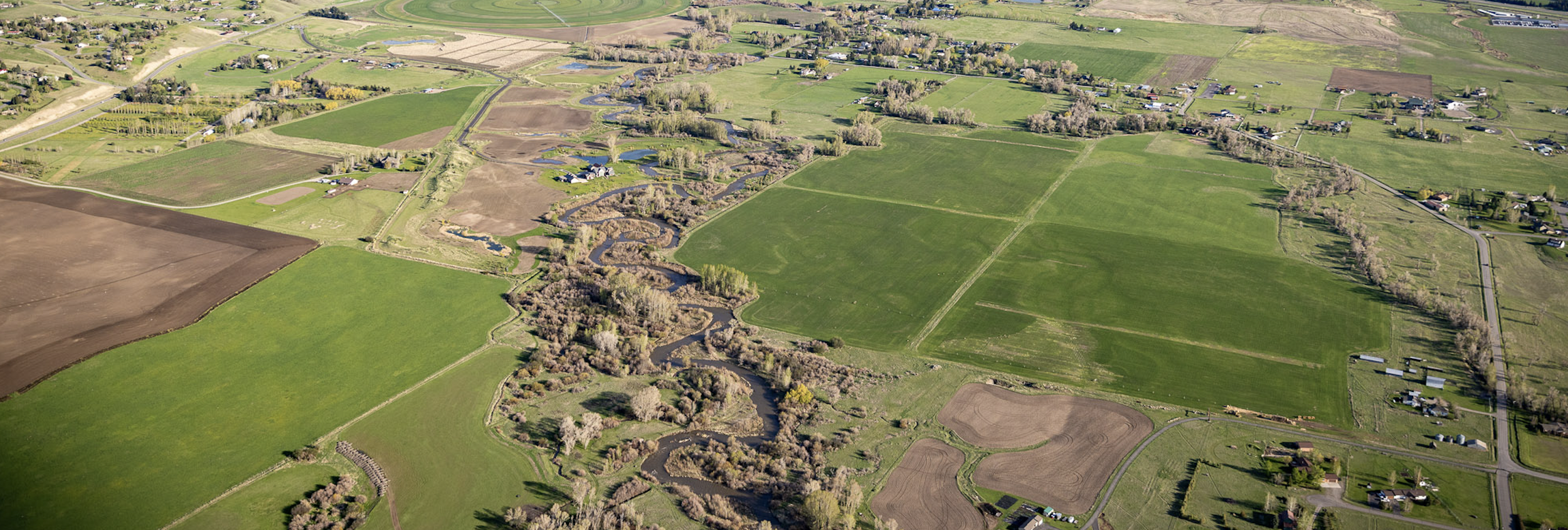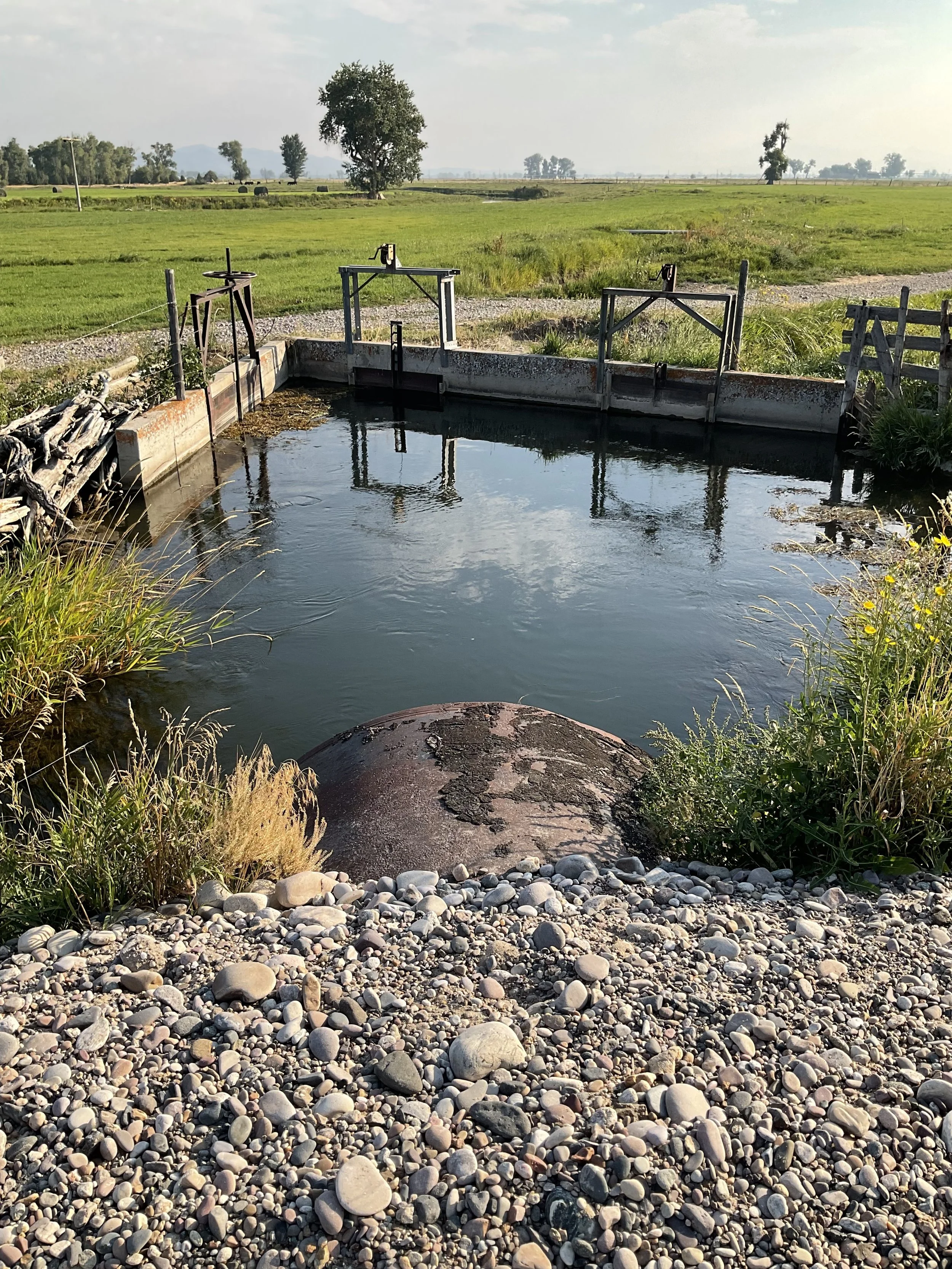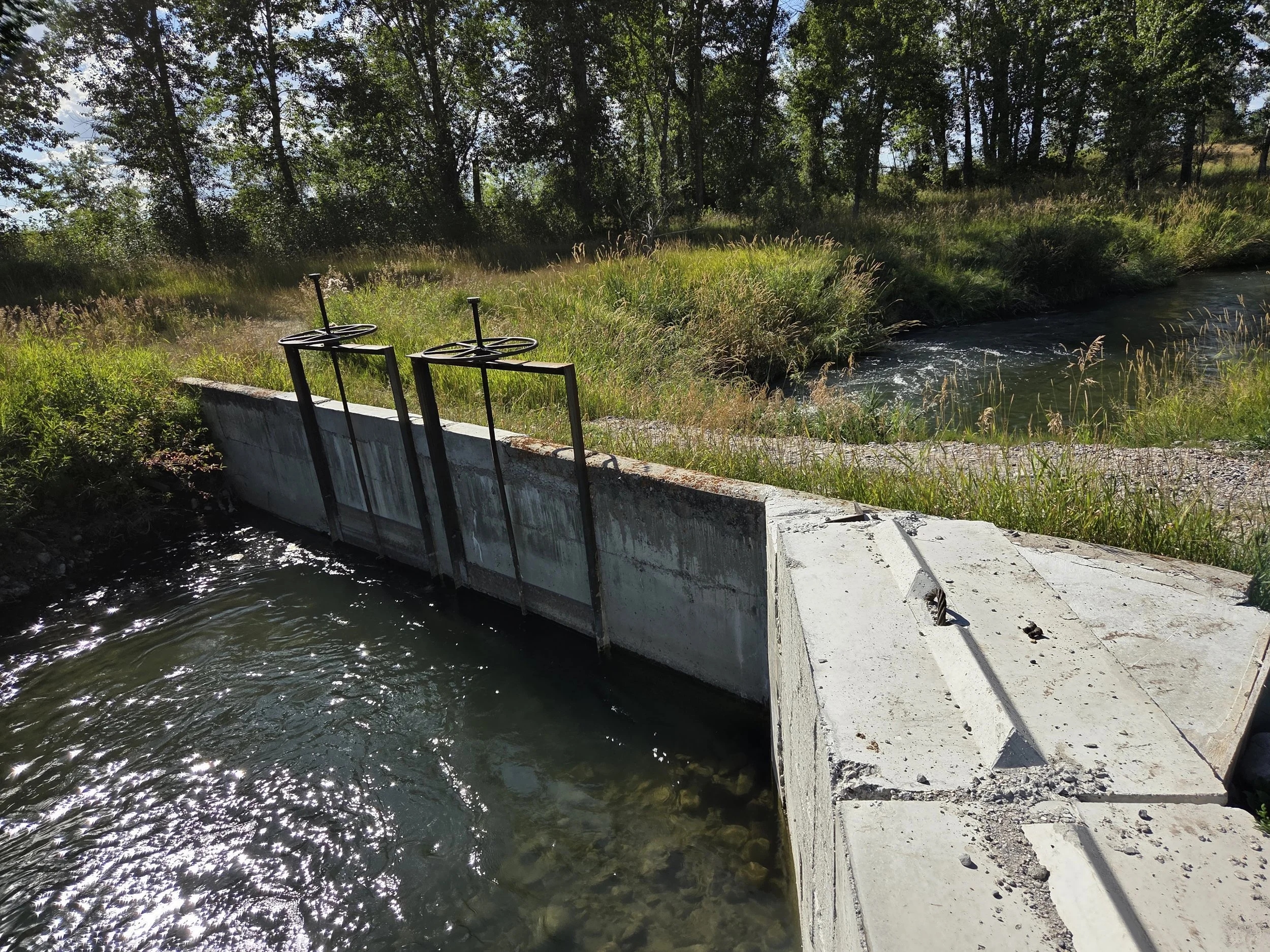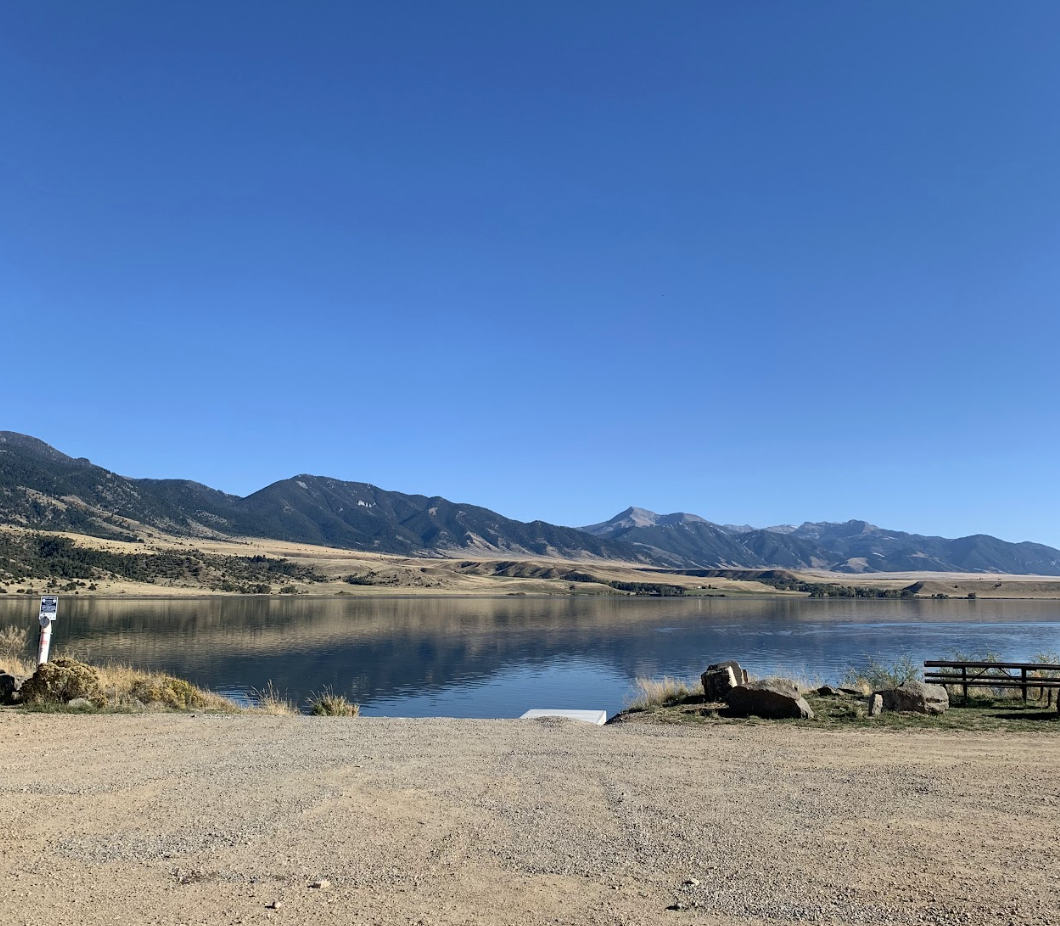
Water-Related Permits in Montana
Depending on your project, you may also need one or more additional permits. Gilly and your Conservation District may point you in the right direction, but it’s ultimately your responsibility to apply for all required permits.
PERMITS AT A GLANCE
For Permit Details - Click the link on each permit
310 Permit
Most projects begin here
Anyone planning work that physically alters or modifies the bed or banks of a perennial stream (a stream that flows year-round).
318 Authorization
(temporary turbidity during construction)
Anyone whose project will temporarily increase turbidity (cloudiness) in a state waterbody — typically due to construction, excavation, or disturbance in or near streams, rivers, or lakes.
Common projects include:
Bank stabilization
Stream crossings
Bridge or culvert work
Channel reconstruction
Stream restoration
Utility installations across waterbodies
SPA 124 Permit
(government projects in streams)
Any agency or contractor working on behalf of an agency (city, county, state, or federal) that plans to construct, modify, or maintain a structure in a stream or river.
Note: Private individuals do not apply for this permit directly. Instead, the agency managing the project is responsible.
401 Certification
(state water quality protection)
Anyone who needs a federal permit (such as a Section 404 permit from the U.S. Army Corps of Engineers) for a project that may result in a discharge into state waters.
Common projects include:
Wetland fills
Stream channel alterations
Bridge or culvert installations
Dams or impoundments
Any project involving dredge/fill work in or near water
Floodplain Development Permit
(construction in mapped floodplains)
Anyone planning work in a mapped 100-year floodplain, including:
New construction
Channel modifications
Fill placement or removal
Bridge or culvert installation
Bank stabilization
Any project that could alter flood flow or storage
Navigable River Land Use License/Lease/Easement
Anyone planning to build or place a structure, or conduct an activity, on or over the bed of a navigable river in Montana.
Common projects include:
Boat ramps, docks, or pilings
Bridge piers or footings
Utility crossings (water, sewer, gas)
Bank stabilization projects that extend into the riverbed
Intakes or outfalls
Section 404/10 Permits
(wetland fills, navigable waters)
Anyone planning to discharge dredged or fill material into wetlands or other waters of the U.S. (Section 404), or conduct work in, over, or under a navigable waterway (Section 10).
Common examples include culverts, bridges, bank stabilization, or placing fill in wetlands.
310 PERMIT DETAILS
310 PERMIT
Most projects begin here with the Joint Application
Montana’s Joint Application Form was developed to simplify the permitting process for stream-related projects that may require review by more than one agency. Rather than submitting separate forms to different state or federal offices, applicants can use a single application that satisfies the initial requirements of multiple regulatory partners.
This approach saves time, reduces confusion, and improves coordination between Conservation Districts and all agencies.
By starting with the 310 Joint Application, applicants create a clear path forward and receive guidance early in the process, avoiding delays or violations later on.
-
To minimize erosion, reduce sedimentation, and protect the natural form and function of Montana’s perennial streams.
-
Anyone planning work that physically alters or modifies the bed or banks of a perennial stream (a stream that flows year-round).
-
310 Permit (Natural Streambed and Land Preservation Act)
PURPOSE: To minimize erosion, reduce sedimentation, and protect the natural form and function of Montana’s perennial streams. -
Local Conservation District (CD) where the project occurs
-
You can apply online using Gilly, or submit three hard copies of the completed application, maps, and any supporting documents to your local Conservation District.
To find your local CD:
Montana Association of Conservation Districts: (406) 443-5711
DNRC Conservation Districts Bureau: (406) 444-6667
make this a link to CD
-
Usually 30–90 days, depending on the district’s meeting and inspection schedule.
-
None
Examples of Projects Requiring a 310 Permit - Apply with the Joint Application
-

Bridges and Culverts:
Installation, removal, or repair of bridges and culverts that cross or are in a perennial stream.
-

Bank Stabilization:
Projects aimed at protecting or stabilizing streambanks, such as using riprap or other methods.
-

Fences and Decks:
Construction of fences, decks, and other structures near or in a stream.
-

Agricultural Projects:
Modifications to irrigation diversions, headgates, and ditches.
-

Recreational Structures:
Building boat ramps and docks.
-

Dams and Ponds:
Creating or modifying dams and ponds.
-

Channel and Bank Alterations:
Dredging, channel changes, and other activities that physically modify the stream's course or bed.
-

Other Projects:
This can include sandbagging, utility installation and maintenance, and removal of debris.
PERMIT DETAILS
SPA 124 PERMIT
-
government projects in streams
-
Any agency or contractor working on behalf of an agency (city, county, state, or federal) that plans to construct, modify, or maintain a structure in a stream or river.
Note: Private individuals do not apply for this permit directly. Instead, the agency managing the project is responsible.
-
(Stream Protection Act)
SPA 124 PERMIT : To protect fish and aquatic life from harm during projects involving stream crossings, bridges, culverts, utility lines, or other in-stream work by public agencies.
-
Montana Fish, Wildlife & Parks (FWP)
-
Coordinate directly with FWP. The responsible agency or its contractor typically submits application materials and construction plans for review.
FWP Link?
-
Approximately 30–90 days, depending on project complexity and completeness of application.
-
None
FLOODPLAIN DEVELOPMENT PERMIT
-
Anyone planning work in a mapped 100-year floodplain, including:
New construction
Channel modifications
Fill placement or removal
Bridge or culvert installation
Bank stabilization
Any project that could alter flood flow or storage
-
FLOODPLAIN DEVELOPMENT PERMIT: To ensure that development in flood-prone areas does not increase flood risks, damage natural floodplain functions, or violate FEMA requirements. Helps protect life, property, and the environment.
-
Your local Floodplain Administrator (usually the County or City Planning Department).
Some areas may not have mapped floodplains or may not participate in the program. -
Start by checking FEMA floodplain maps (available online or through your local planning office).
Contact your local administrator to determine requirements.
Some projects may need both a floodplain permit and other state/federal permits. -
Varies by jurisdiction and complexity.
Typically 2–6 weeks, but may take longer if coordination with other agencies is needed. -
Varies by county or city. Some charge a flat fee; others base it on project cost or size.
SECTION 404 and SECTION 10 PERMITS
-
Anyone planning to discharge dredged or fill material into wetlands or other waters of the U.S. (Section 404), or conduct work in, over, or under a navigable waterway (Section 10).
Common examples include culverts, bridges, bank stabilization, or placing fill in wetlands. -
SECTION 404 and SECTION 10 PERMITS
Section 404 falls under the Clean Water Act;
Section 10 under the Rivers and Harbors Act.PURPOSE: To protect wetlands, rivers, streams, and other U.S. waters by regulating discharge of materials and construction in navigable waters.
Section 404: Regulates the discharge of dredged or fill material into waters of the United States, including wetlands.Section 10: Regulates work in, over, or under navigable waters of the United States.
-
U.S. Army Corps of Engineers
(HQ in Helena for Montana: [Link or contact details can be added]) -
Contact the Helena Regulatory Office of the Army Corps early in project planning.
Most applicants work with a consultant to prepare and submit the necessary documentation.
Some projects may qualify for a Nationwide Permit, which is faster and less complex. -
Usually 60–120 days for standard permits, longer if complex or incomplete.
Nationwide Permits may be faster. -
Standard Individual Permit: No fee
Nationwide Permit: Varies by type, often no fee
318 AUTHORIZATION
-
Anyone whose project will temporarily increase turbidity (cloudiness) in a state waterbody — typically due to construction, excavation, or disturbance in or near streams, rivers, or lakes.
Common projects that need 318 Authorization:
Bank stabilization
Stream crossings
Bridge or culvert work
Channel reconstruction
Stream restoration
Utility installations across waterbodies
-
318 AUTHORIZATION Short-Term Water Quality Standard for Turbidity)
To allow short-term exceedances of Montana's water quality standards for turbidity, while protecting aquatic life and downstream users.
Applies to both perennial and intermittent streams.
-
Montana Department of Environmental Quality (DEQ) – Water Protection Bureau
-
Submit the Joint Application Form (Gilly can help generate this).
DEQ reviews turbidity impacts and mitigation practices.
May require a Turbidity Monitoring Plan.
-
Approximately 30–60 days, depending on project complexity and completeness of application.
-
None
401 WATER QUALITY CERTIFICATION
-
Anyone who needs a federal permit (such as a Section 404 permit from the U.S. Army Corps of Engineers) for a project that may result in a discharge into state waters.
Common projects include:
Wetland fills
Stream channel alterations
Bridge or culvert installations
Dams or impoundments
Any project involving dredge/fill work in or near water
-
401 WATER QUALITY CERTIFICATION: To ensure that activities requiring a federal permit (typically a Section 404 permit) do not violate Montana’s water quality standards.
-
Montana Department of Environmental Quality (DEQ)
-
Submit the Joint Application Form along with your Section 404 permit application to the U.S. Army Corps of Engineers.
DEQ will automatically review the project for water quality impacts.
They may request additional information if needed.
A 401 Certification cannot be issued until your 404 application is complete.
For questions or to check if your project qualifies, contact:
U.S. Army Corps of Engineers (Helena): (406) 441-1375
Montana DEQ Water Quality Division: (406) 444-3080
-
Approximately 30 days after both application and fee are received.
-
$400 – $20,000 depending on project complexity.
Already have a Gilly account? Sign in here
